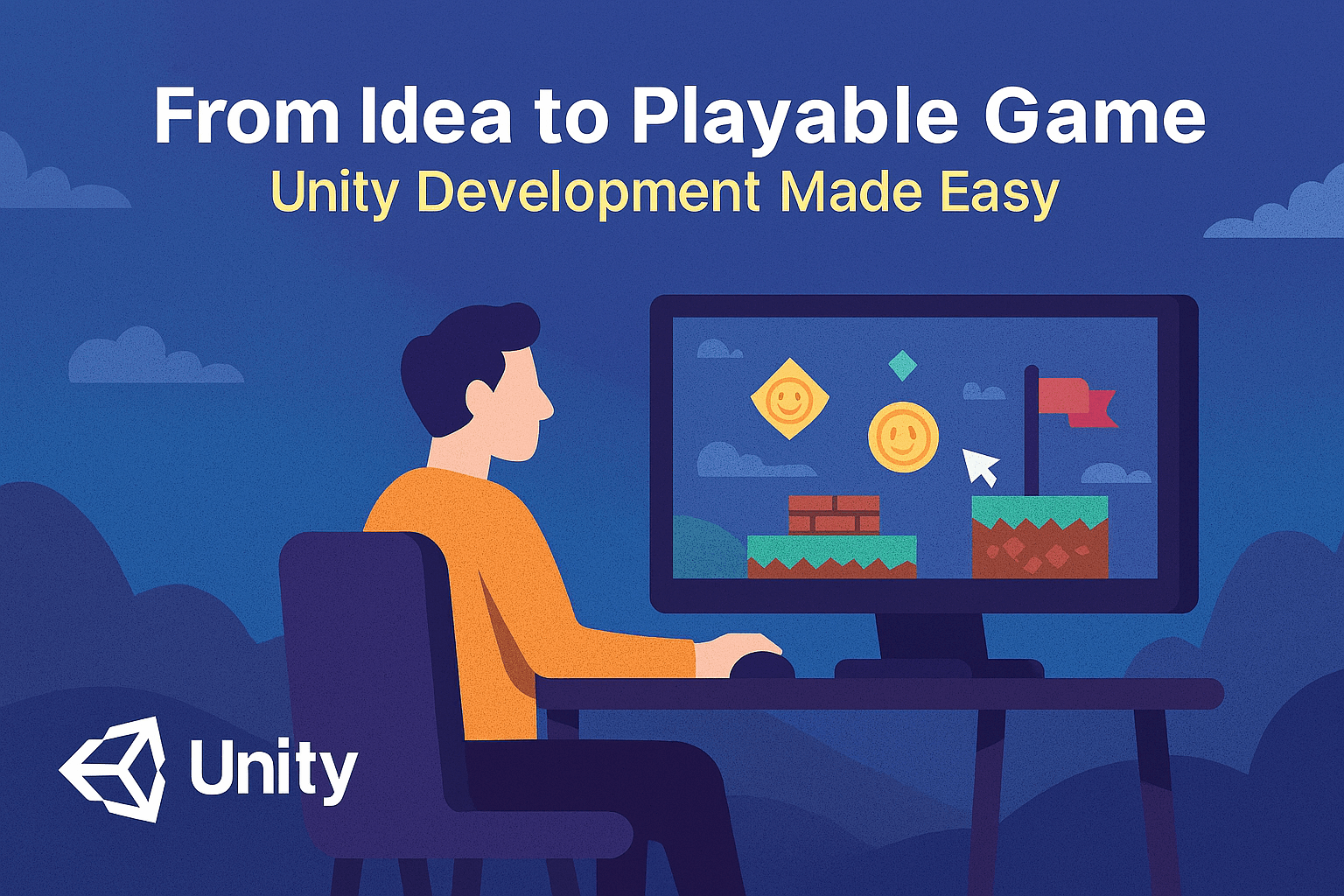From Idea to Playable Game: Unity Development Made Easy

Table of Contents
Game development has never been more accessible than it is today. With engines like Unity, aspiring developers and seasoned professionals alike can turn their creative ideas into fully functional, engaging games. However, the journey from concept to playable game involves more than just coding. It requires a careful balance of creativity, technical knowledge, and strategic planning.
Conceptualizing Your Game Idea
Every great game begins with a solid idea. Whether it’s a narrative-driven adventure, a fast-paced action game, or an innovative puzzle, the first step is to clearly define your vision. Start by asking yourself: what is the core experience you want to deliver? Who is your target audience? What emotions or reactions do you want to evoke?
During this stage, prototyping is crucial. Even simple sketches, flowcharts, or paper prototypes can help visualize mechanics and gameplay dynamics. Unity allows developers to quickly translate these ideas into testable prototypes, giving immediate feedback on gameplay loops and interaction models.
Many top developers look for inspiration and guidance from industry leaders. Exploring trends and strategies used by leading Unity game development studios can offer invaluable insights. For example, resources like https://medium.com/@thegamedevobserver/top-unity-game-development-studios-2026-leaders-and-innovators-99454d069a34 provide detailed analyses of innovative studios shaping the industry, offering lessons on workflow, design philosophy, and production efficiency.
Setting Up in Unity
Once your idea is clear, it’s time to move into Unity. The engine provides a robust ecosystem for both 2D and 3D game development. Begin by organizing your project structure: scenes, assets, scripts, and prefabs should be logically arranged to facilitate collaboration and maintenance.
Unity’s intuitive interface allows developers to drag and drop assets, set up physics, and implement basic game mechanics without needing extensive programming knowledge. For beginners, Unity’s Asset Store is a treasure trove of free and paid resources — from character models and animations to complete environment kits — that can accelerate development.
Scripting in C# is where your game truly comes to life. Whether it’s character controls, AI behavior, or dynamic UI, Unity provides powerful APIs that integrate seamlessly with its physics engine, animation system, and rendering pipeline. Modular, reusable scripts are key to maintaining a clean codebase, especially as projects scale.
Iteration and Playtesting
No game is perfect on the first attempt. Iteration is an essential part of development. Playtesting early and often helps identify issues with mechanics, pacing, and user experience. Unity’s Play Mode allows instant testing in the editor, reducing the need for time-consuming builds.
Feedback loops from friends, colleagues, or even online communities can highlight flaws and spark ideas for improvements. Balancing difficulty, refining controls, and enhancing visual and audio feedback are ongoing tasks throughout the development cycle. Remember, even minor tweaks can dramatically improve the player experience.
Additionally, observing the practices of successful studios can guide your iteration process. Many innovative Unity developers prioritize rapid prototyping, frequent testing, and player-centric design, which ensures that the game evolves in alignment with audience expectations.
Publishing and Beyond
After thorough testing and polish, your game is ready for release. Unity simplifies deployment across multiple platforms, from Windows and Mac to mobile devices and consoles. Optimizing performance for different devices is crucial — frame rates, memory usage, and asset compression all play a role in delivering a smooth experience.
Marketing and community engagement are equally important. Even the best games can go unnoticed without strategic promotion. Utilizing social media, gaming forums, and live streams can build a loyal player base before launch. Post-launch support, including updates and bug fixes, maintains engagement and enhances reputation.
Finally, studying the industry’s leading Unity studios not only inspires but also sets benchmarks for quality and creativity. Observing their workflows, production pipelines, and innovation strategies helps developers of all levels understand what it takes to succeed in today’s competitive game market.
Conclusion
Transforming an idea into a playable game with Unity is an achievable goal for anyone willing to learn and iterate. By combining creative vision, disciplined development practices, and insights from industry leaders, developers can create engaging, polished experiences that resonate with players worldwide. The path from concept to game is challenging, but with Unity as a tool and inspiration drawn from top studios, it becomes a journey filled with discovery and satisfaction.
Support Ukraine against russian fascists! Defend Europe from horde! Glory to Ukraine! 🇺🇦

George Brown is a main editor in Bitgraph Network Team.